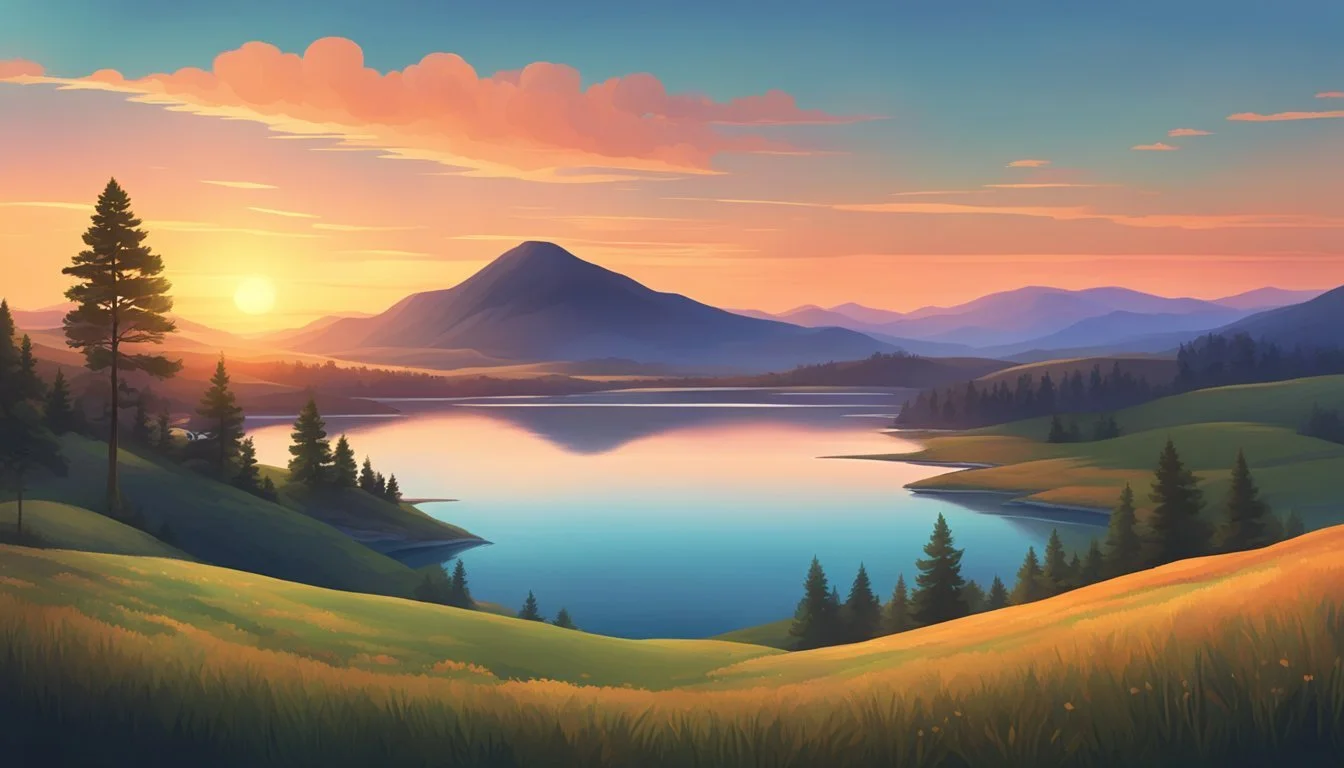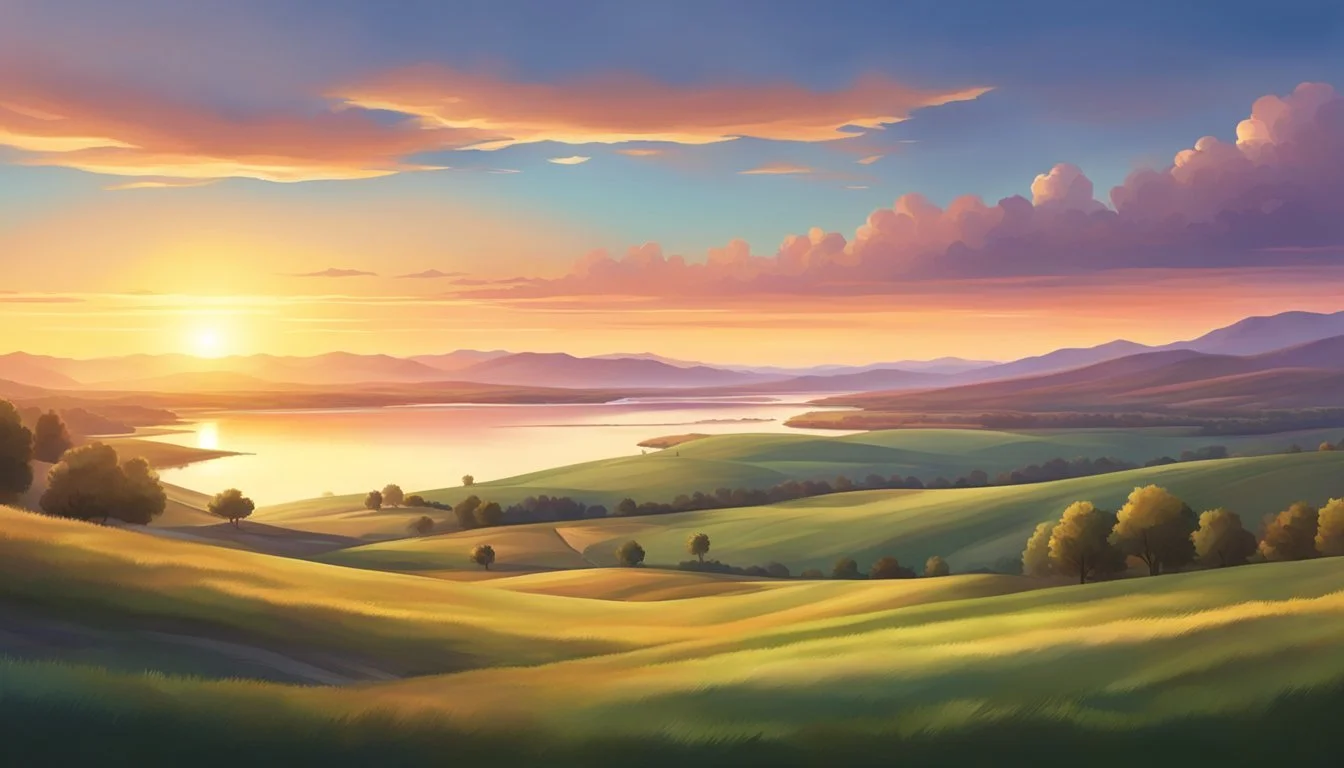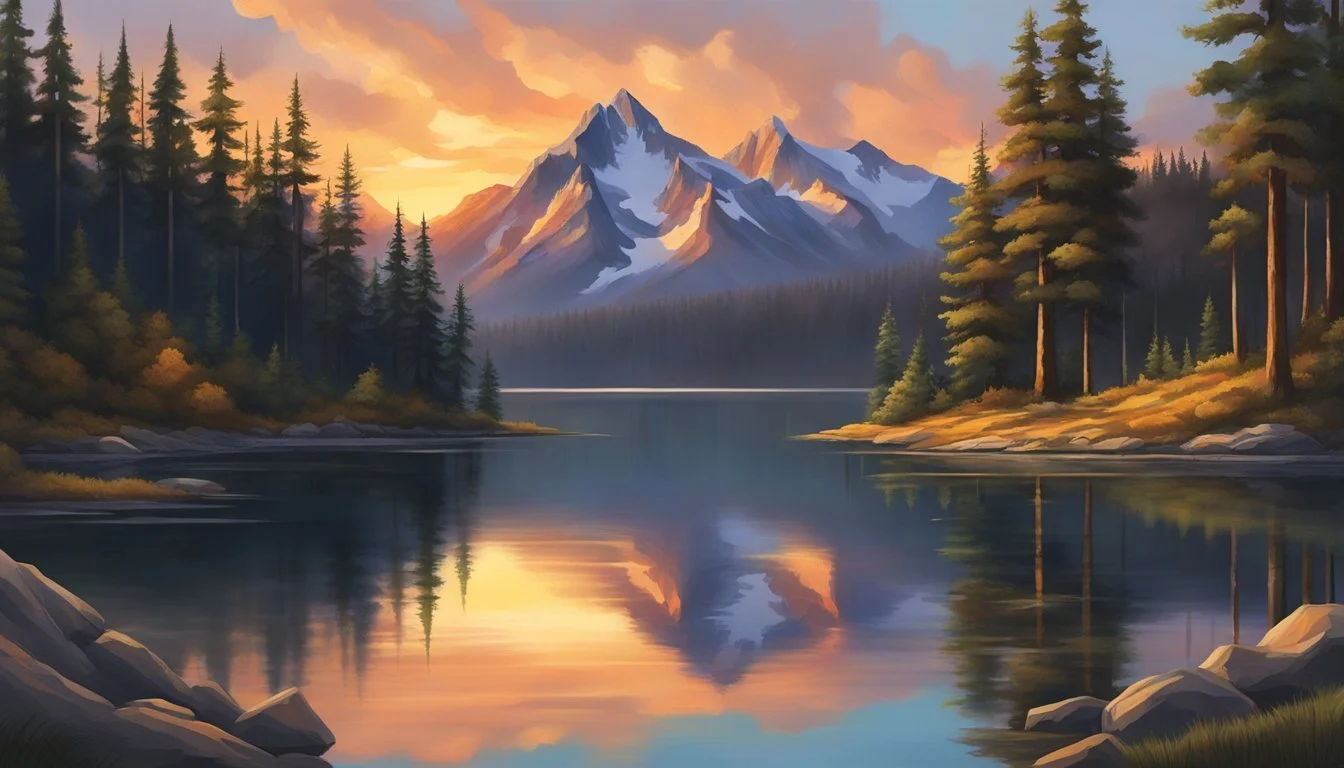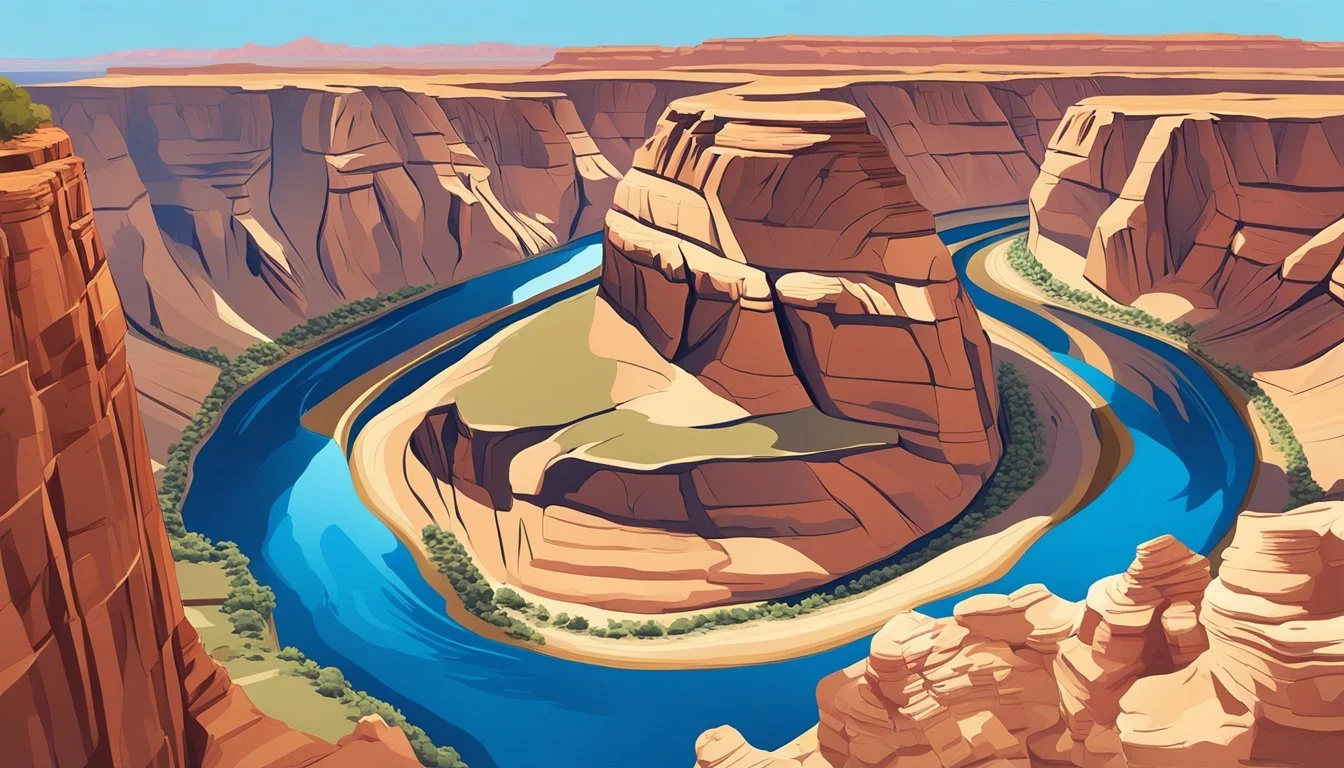Free Land for Photographers
Explore Stunning Scenic Locations
Photographers who are passionate about landscape photography will be delighted to know that there are numerous scenic locations in the United States where they can explore and capture stunning images. These untamed wildernesses often offer breathtaking vistas without the need for expensive permits or fees. From the iconic Yosemite with its towering granite cliffs and cascading waterfalls to the serene beauty of La Jolla's coastline in California, these destinations provide endless opportunities for creating remarkable photographs.
In addition to national parks, the U.S. is home to many lesser-known but equally captivating spots. Places like the Christman Covered Bridge in Preble County, Ohio, offer unique settings that blend history and natural beauty, perfect for any photographer looking to add a rustic charm to their portfolio. Each venue not only promises beauty but also invites photographers to immerse themselves in the art of capturing nature’s most pristine moments.
Exploring these picturesque locations can be a rewarding endeavor, providing both seasoned professionals and enthusiastic amateurs with incredible backdrops for their work. The experience of documenting these landscapes can transform a simple photo into a timeless piece of art, preserving the essence of America's natural wonders. By venturing into these free and accessible scenic locations, photographers can enrich their craft and share the beauty of the world with others.
Understanding Landscape Photography
Landscape photography captures the beauty of iconic locations and nature's vastness. Key aspects include composition, exposure, and special techniques like long-exposure to create stunning images.
Essentials of Composition
Composition is the foundation of compelling landscape photography. Leading lines guide the viewer’s eye through the scene, while the rule of thirds enhances balance.
Foreground Interest: Adding elements like rocks or plants in the foreground increases depth.
Framing: Utilize natural elements to frame the scene, such as tree branches or archways.
Diagonals: Diagonal lines add dynamism and movement to the shot.
Experimenting with different angles and perspectives allows landscape photographers to discover unique compositions.
Exposure and Depth of Field Explained
Exposure determines how light or dark a photo appears, influenced by aperture, shutter speed, and ISO.
Aperture: For landscapes, a small aperture (f/11 to f/16) is ideal to achieve a wide depth of field, ensuring both the foreground and background are sharp.
Shutter Speed: A faster shutter speed (e.g., 1/250s) freezes motion, while slower speeds (e.g., 1/10s) introduce motion blur.
ISO: Keep ISO low (around 100) to reduce noise.
Depth of field impacts how much of the scene is in focus. Landscape photographers often seek deep depth of field for clear, sharp images from the foreground to the horizon.
The Magic of Long-Exposure
Long-exposure photography captures changes over time, creating ethereal effects.
Water: Using longer shutter speeds smooths out waterfalls and rivers.
Sky: Capturing cloud movement adds drama and texture to skies.
Light: Long exposures at night can transform car lights into streaks or capture star trails across the sky.
A sturdy tripod is essential to avoid camera shake during long-exposure shots. Combining a neutral density filter with long-exposure techniques allows shooting during bright daylight while maintaining desired exposure levels.
These techniques help landscape photographers produce images that transcend simple snapshots, offering viewers a glimpse into the timeless beauty of the world.
Planning Your Photography Adventure
Photographers embarking on a scenic adventure need to invest time in meticulous preparation, leverage technological aids, and craft a well-defined itinerary.
Research and Preparation
Prior to any trip, thorough research is crucial. Understanding the local weather patterns can aid in choosing the best time to visit. Using resources like weather charts and historical data helps predict conditions. Consulting locals or other photographers can provide invaluable insights into the location.
An organized approach, possibly using a spreadsheet, can help track important information such as best vantage points, sunrise/sunset times, and access routes.
Technological Aids for Location Scouting
Modern technology offers several tools to aid photographers. Google Earth allows a detailed view of potential locations. Using GPS apps ensures accuracy in reaching these spots.
Platforms like Instagram can help identify popular and hidden gems. Hashtags and the "places" search function allow photographers to see what others have captured.
Creating Your Adventure Itinerary
An effective itinerary considers the best times for photography, incorporating factors like golden hour and blue hour for optimal lighting. Planning the sequence of visits to locations ensures efficiency.
Including backup plans and rest periods within the schedule ensures flexibility and reduces fatigue. Keeping track of logistical details such as road conditions and access permits is also essential for a smooth adventure.
Iconic U.S. Landscapes for Photography
The United States offers a plethora of iconic landscapes, perfect for photographers keen on capturing the beauty of the natural world. Key highlights include national parks and protected areas, California's coastal scenes, and the mesmerizing desert landscapes with unique rock formations.
National Parks and Protected Areas
Yosemite National Park in California stands as a crown jewel, known for its towering granite cliffs such as El Capitan and Half Dome. Yellowstone National Park, spanning Wyoming, Montana, and Idaho, impresses with geysers like Old Faithful and colorful hot springs.
The Grand Canyon in Arizona offers vast, breathtaking vistas carved by the Colorado River. Arches National Park in Utah features over 2,000 natural stone arches, presenting myriad photographic opportunities. Each park provides distinct scenery, catering to diverse photographic styles.
California’s Coastal Scenes
California's coastline presents stunning photographic opportunities. Big Sur, with its dramatic cliffs and ocean views, is a favorite. The Bixby Bridge offers an iconic shot with its elegant span against the rugged coastline.
Further south, photographers can capture the beauty of coastal towns like Carmel and the towering cliffs of the Point Lobos State Natural Reserve. The ever-changing light and weather conditions along California's coast create dynamic and captivating images.
Desert Landscapes and Rock Formations
Desert landscapes offer a unique backdrop for photographers. Death Valley National Park in California boasts striking features like the Badwater Basin salt flats and Mesquite Flat Sand Dunes.
In Arizona, the Grand Canyon reveals vast layers of geological history, while Monument Valley straddling Arizona and Utah displays iconic sandstone buttes. Arches National Park again stands out for its red rock landscapes and delicate stone arches, offering both grandeur and intimate beauty through its terrains.
Special Considerations for Different Landscapes
When photographing various landscapes, it's crucial to account for the unique features and challenges presented by each type.
Forests and River Valleys
In forests, photographers need to be mindful of lighting conditions. Dense tree canopies can create contrast between light and shadow, making it essential to adjust exposure settings manually.
River valleys often present opportunities for long exposure shots, highlighting the flow of water. Bring a tripod to stabilize the camera and capture silky smooth water effects.
Watch for natural frames such as branches or rocks that can enhance the composition. In river valleys, take extra care with moisture and protect equipment from splashes or humidity.
Mountainous Terrain and Elevated Vistas
Mountainous terrains offer sweeping vistas and a variety of elevations. Weather conditions can change rapidly in high altitudes, so always check forecasts and be prepared for sudden shifts.
The play of light on elevations can dramatically alter a scene, especially during the golden and blue hours. Use these times to capture the most striking images.
Bringing wide-angle lenses is useful to encompass expansive views, while telephoto lenses help isolate interesting details like unique rock formations or distant peaks. Ensure stability with a sturdy tripod, especially in windy conditions.
Desert Scenes and Unique Rock Structures
Desert landscapes are characterized by harsh sunlight and unique rock formations. It is important to have lens filters to manage excessive brightness and reduce glare.
Morning and late afternoon give the most flattering light, casting long shadows and adding depth. Be aware of the fine sand that can damage lenses and other equipment; always have cleaning tools at hand.
Rock structures in deserts offer intriguing subjects. Experiment with different angles to emphasize textures and shapes. Water sources in desert environments can create rare and captivating reflections that enhance the composition.
By considering these specific elements, photographers can tackle diverse landscapes with more confidence and creativity.
Capturing Nature Through the Lens
Nature photography offers a unique opportunity to preserve fleeting moments of the world’s beauty, from close-ups of wildlife and plants to the stunning transitions of the sky.
Floral and Fauna Close-ups
Close-up photography of flowers and wildlife allows for capturing intricate details that might be missed by the naked eye. Photographers often use macro lenses to magnify small subjects, bringing out textures and patterns. Depth of field is critical; it helps to isolate the subject, making it stand out from the background.
Proper lighting is essential. Natural light works best, but diffusers can help soften harsh shadows. Patience is key to photographing animals; sometimes, it involves waiting quietly for hours. Understanding animal behavior can improve chances of capturing perfect moments.
Sunrise, Sunset, and the Golden Hour
Photographing during the golden hour—shortly after sunrise or before sunset—yields beautiful, warm tones. At sunrise, the world is often calmer, offering undisturbed reflections on water surfaces. Sunset provides rich, moody colors that add drama to landscape shots.
Using a tripod is advisable to stabilize the camera for crisp images. Adjusting the aperture and shutter speed helps manage changing light conditions. Filters, like graduated neutral density filters, can balance exposure between the bright sky and darker foreground.
Astrophotography Fundamentals
Astrophotography opens up the night sky’s beauty, from capturing the moon to the majestic Milky Way. The key is finding a dark location, far from city lights. Using wide-angle lenses helps capture expansive star-filled skies.
A sturdy tripod is essential to prevent motion blur. Set the camera to manual mode, with long exposure times and high ISO settings to gather more light. Focusing to infinity ensures sharp stars. Experimenting with different compositions and angles can lead to awe-inspiring images.
By mastering these techniques, photographers can create stunning, memorable images that showcase the splendor of nature’s smallest details and grandest scenes alike.
Advanced Techniques and Local Insights
Discovering scenic locations often requires a blend of advanced photographic techniques and insider tips from locals. Here are some key methods and strategies to enhance your experience and results.
Leveraging Local Knowledge
Local photographers are invaluable for discovering hidden gems. They often have insights on less crowded spots and the best times to shoot. Engaging with them can also reveal cultural nuances that add depth to your photos.
Joining local photography groups or forums can provide access to these experts. Whether it's a bustling city or a remote village, locals often share valuable tips and lesser-known locations that are not found in guidebooks.
Social Media and Photographer Communities
Platforms like Instagram and 500px host a wealth of visual data. Searching for hashtags and geotags related to your destination can uncover popular spots and emerging trends.
Participating in online photography communities is another great method. Experienced photographers frequently share their techniques and locations on these platforms. Following accounts of locals and professionals can provide a steady stream of inspiration and insider knowledge.
Achieving a Unique Perspective
To stand out, focus on capturing a unique perspective. Experiment with different angles, compositions, and times of day. The golden hour and blue hour are particularly effective for achieving dramatic effects, as suggested by various photography guides.
Incorporate elements like reflections, leading lines, and natural frames. Engage with the environment and adjust your techniques based on local conditions and lighting. Exploring alternative vantage points or incorporating regional elements can significantly enrich your photographic portfolio.
Practical Tips for Outdoor Photography
Ensuring a successful outdoor photography session involves proper trail navigation, carrying essential gear, and being prepared for changing weather conditions.
Navigating Hiking Trails and Wilderness
To capture the best scenic shots, photographers often traverse various trails and wilderness areas. Maps and GPS devices are crucial for navigation. They help in planning the route and marking waypoints. Familiarity with trail markers can prevent getting lost.
It's beneficial to inform someone about the planned path and expected return time. Avoiding off-trail areas reduces the risk of injury and protects the environment. Wearing sturdy hiking boots and carrying a first aid kit enhances safety during the hike.
Photography Gear Essentials
Outdoor photography requires specialized gear to handle different conditions. A sturdy tripod is essential for stable shots, especially in low light. Lenses with different focal lengths, like wide-angle for landscapes and telephoto for distant subjects, ensure versatility.
Polarizing filters manage reflections and enhance colors. Using a weather-sealed camera is beneficial in varying conditions. Extra batteries and memory cards prevent interruptions. Lastly, a comfortable backpack organizes and protects the gear efficiently.
Weather Preparedness and Safety Measures
Weather can change rapidly, especially in remote areas. Checking weather forecasts before heading out helps in planning. Wearing layers of clothing ensures comfort in fluctuating temperatures. A rain cover for both the photographer and gear protects against unexpected showers.
Knowing basic weather signs, like cloud formations, can predict short-term changes. Packing emergency supplies such as a whistle, flashlight, and multi-tool enhances safety. Staying hydrated and consuming enough energy-rich snacks are important during longer shoots.
Post-Processing and Photo Editing
Effective post-processing and photo editing enhance the beauty of landscape photographs. This involves using specific editing techniques, reliable software, and advanced methods like HDR and exposure blending.
Introduction to Post-Processing
Post-processing is an essential step in landscape photography. It involves adjusting aspects such as brightness, contrast, and color balance to bring out the best in a photograph. Editing software such as Adobe Lightroom and Photoshop are popular choices among photographers for their extensive range of tools. Learning post-processing techniques can greatly enhance the visual appeal of an image.
Editing Techniques for Landscape Photos
There are many editing techniques that can be used to improve landscape photos. Dehaze filters are useful for reducing atmospheric haze, bringing clarity to images. Adjusting the white balance ensures that colors look natural and consistent.
Another valuable method is the Orton Effect, which adds a dreamy look to photos. To achieve this, duplicate the background layer, apply the image, and adjust the blending mode. Cropping and straightening are basic yet crucial steps to refine composition and remove distractions.
HDR and Exposure Blending
High Dynamic Range (HDR) photography and exposure blending are advanced techniques that help balance exposure in landscape photos. HDR involves taking multiple shots at different exposures and merging them to capture a more dynamic range of light.
Exposure blending is similar but allows for more control, as photographers manually blend exposures using masks in software like Photoshop. This method ensures that both highlight and shadow details are preserved. HDR and exposure blending are particularly useful for scenes with significant contrast between light and dark areas.






